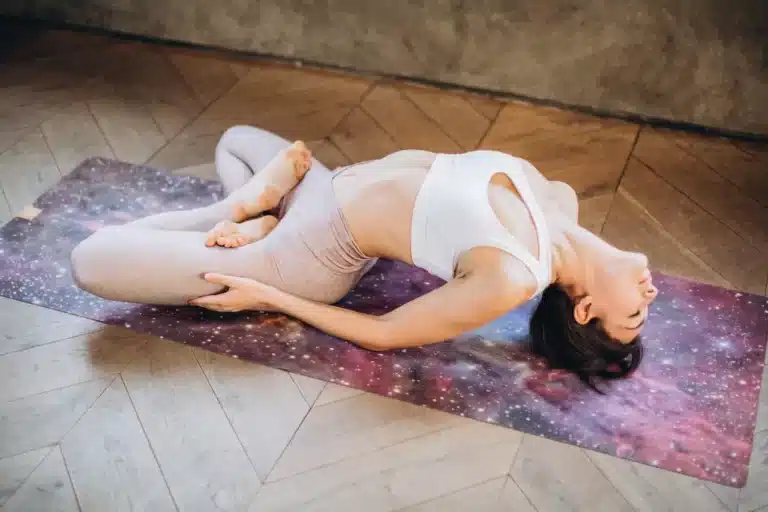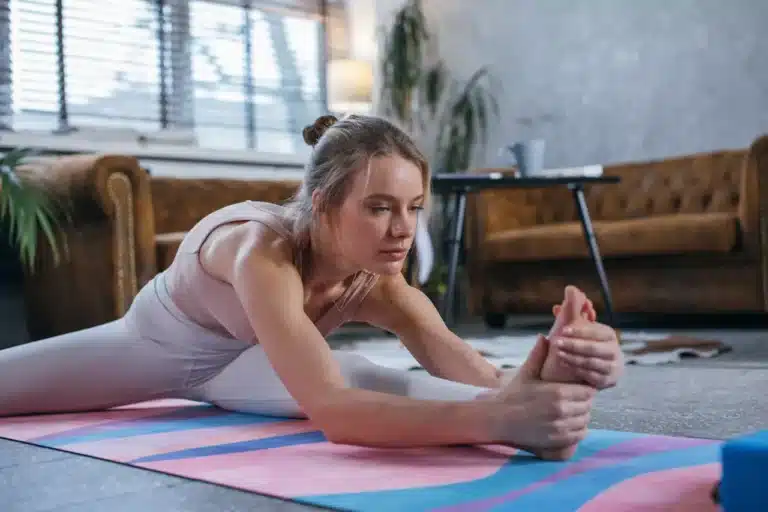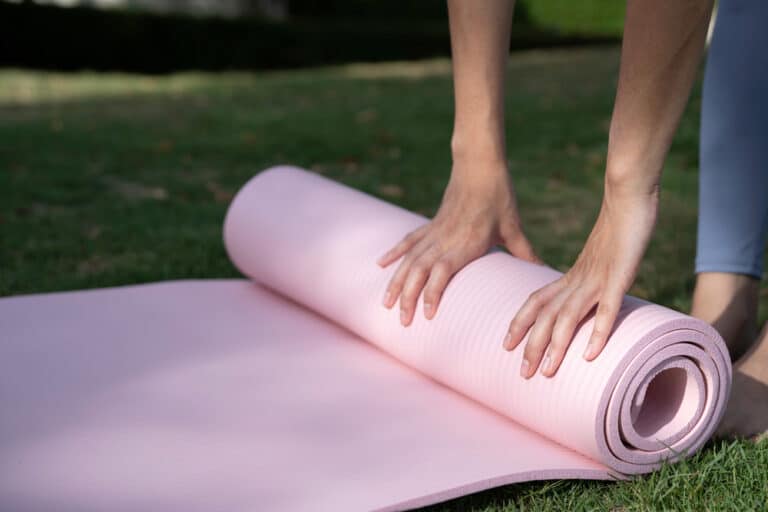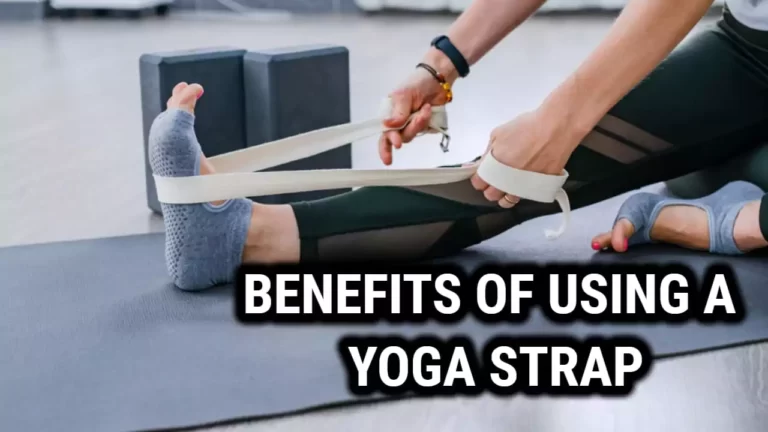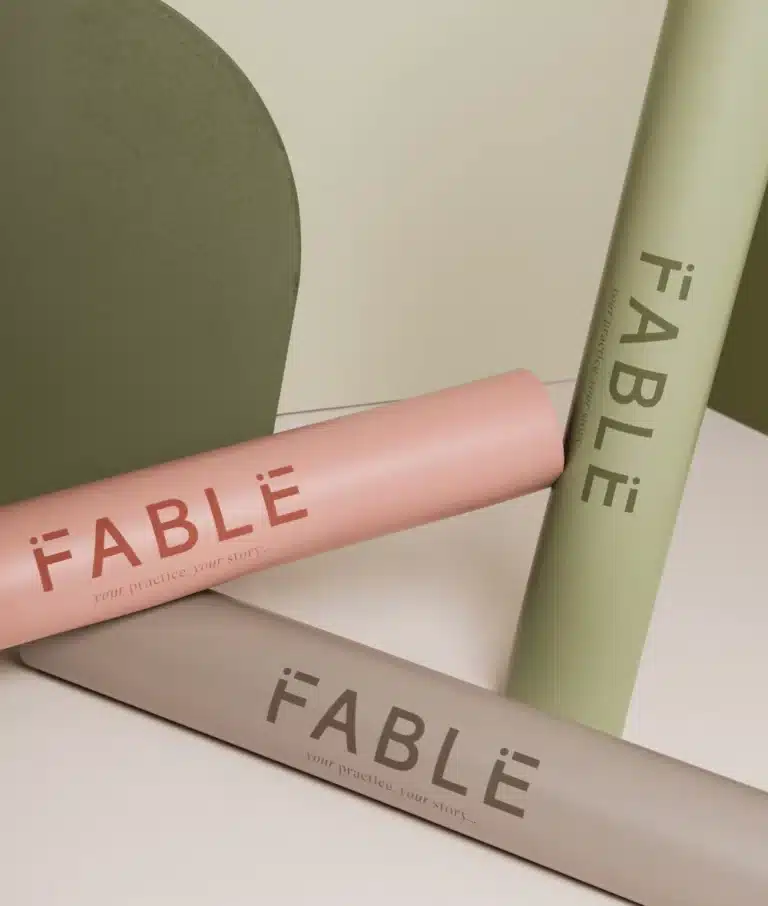Tpe Vs Pvc Yoga Mat Material – Which Is the Better Yoga Mat

Are you a yoga enthusiast looking for the perfect mat to enhance your practice? With so many options available, it can be overwhelming to choose the right one.
Two popular materials for yoga mats are TPE and PVC, each with their own unique benefits and drawbacks. TPE mats are known for being lightweight, eco-friendly, and providing excellent cushioning. On the other hand, PVC mats offer durability, affordability, and excellent grip.
In this article, we’ll explore the differences between TPE and PVC yoga mats, their pros and cons, as well as other eco-friendly alternatives to help you make an informed decision when selecting a yoga mat that suits your needs.
So, whether you’re a beginner or an experienced yogi, read on to learn more about TPE vs PVC yoga mats and find the perfect mat for your practice.
Key Takeaways
- TPE mats are soft, lightweight, and eco-friendly, but less durable than PVC mats and not ideal for hot yoga.
- PVC mats are durable, affordable, and offer excellent grip, making them suitable for hot yoga and balancing poses.
- Other eco-friendly alternatives to consider include natural rubber, cork, and jute mats.
- When choosing a yoga mat, consider personal preferences and priorities such as comfort, cushioning, eco-friendliness, durability, stability, and affordability.
1. Materials Comparison
Looking to choose between TPE and PVC yoga mats? Let’s compare the materials:
TPE is soft and lightweight, making it an excellent choice for those looking for a mat that provides cushioning and support for joints. It’s also eco-friendly, biodegradable, and recyclable, making it a great option for those who prioritize sustainability. However, TPE mats are not as durable as PVC mats and may not be suitable for hot yoga due to their sensitivity to heat.
On the other hand, PVC mats are known for their durability, affordability, and excellent grip. They offer a firmer surface, providing stability and support for balancing poses. While PVC mats may be slippery when new, they develop a better grip over time. Additionally, they are suitable for hot yoga as they can withstand high temperatures and provide excellent grip when wet. However, PVC mats are not eco-friendly, and some may prefer to opt for natural rubber, cork, or jute mats as an alternative.
Ultimately, the choice between TPE and PVC yoga mats depends on personal preferences and priorities regarding comfort, cushioning, eco-friendliness, durability, stability, and affordability.
2. Pros and Cons
Pros of TPE Yoga Mat:
1. Environmentally friendly: TPE is a biodegradable and recyclable material, which makes it a more sustainable option than PVC.
2. Non-toxic: TPE does not contain harmful chemicals like phthalates, which can be found in PVC mats.
3. Lightweight: TPE mats are lighter in weight than PVC mats, which makes them easier to carry around and transport.
4. Good grip: TPE mats provide a good grip and are slip-resistant, which makes them suitable for different types of yoga practices.
Cons of TPE Yoga Mat:
1. Durability: TPE mats are not as durable as PVC mats and may wear out faster.
Pros of PVC Yoga Mat:
1. Durability: PVC mats are more durable than TPE mats and can last longer.
2. Easy to clean: PVC mats are easy to clean and can be wiped down with a damp cloth.
3. Affordable: PVC mats are generally less expensive than TPE mats.
Cons of PVC Yoga Mat:
1. Toxic chemicals: PVC mats can contain toxic chemicals like phthalates, which can be harmful to health.
2. Heavy: PVC mats are heavier than TPE mats, which can make them difficult to carry around.
3. Slippery: PVC mats can be slippery, especially when wet, which can be dangerous during yoga practice.
3. Durability and Longevity
When choosing a yoga mat, it’s important to think about how long it will last and how well it will hold up over time.
In terms of durability and longevity, PVC mats tend to outlast TPE mats. PVC mats are made with synthetic rubber, which is known for its excellent durability and ability to withstand wear and tear. With proper care, a PVC yoga mat can last for years without showing any signs of wear.
On the other hand, TPE mats are not as durable as PVC mats. While they’re soft, lightweight, and eco-friendly, they’re not as long-lasting as PVC mats. TPE mats can become brittle and crack over time, especially if they’re exposed to direct sunlight or high temperatures.
If you’re looking for a long-lasting, eco-friendly yoga mat, you may want to consider alternatives such as natural rubber, cork, or jute mats. These materials are known for their durability and longevity, and they’re also eco-friendly options for yogis who are mindful of the environment.
4. Eco-Friendliness
Choosing an eco-friendly alternative for your yoga practice isn’t just a conscious decision for the environment, but also for your own health and well-being. When it comes to yoga mats, both TPE and PVC mats have their pros and cons in terms of eco-friendliness.
TPE mats are biodegradable, recyclable, and made from a blend of plastic and rubber. On the other hand, PVC mats are made from synthetic materials and aren’t biodegradable. However, some PVC mats are now being made with a more eco-friendly approach, using fewer harmful chemicals and having a lower carbon footprint.
If you’re looking for a more natural material, there are also options like natural rubber, cork, and jute mats that are biodegradable, sustainable, and environmentally friendly. These materials are also non-toxic, non-slip, and provide good cushioning for your practice.
When choosing an eco-friendly yoga mat, consider your personal preferences and priorities, and look for certifications such as OEKO-TEX or GOTS that verify the mat’s sustainability and safety. Overall, investing in an eco-friendly yoga mat is a small but important step towards a more sustainable and mindful yoga practice.
5. Cleaning and Maintenance
To keep your yoga practice clean and hygienic, it’s important to know how to properly clean and maintain your mat. Whether you have a TPE or PVC yoga mat, regular cleaning and maintenance can help extend its lifespan and maintain its quality. Here are some tips for cleaning and maintaining your yoga mat:
- Clean your mat after every use: Sweat and dirt can accumulate on your mat, leading to odor and bacteria growth. Wipe down your mat with a gentle cleaner or a mixture of water and mild soap after every use to keep it fresh and clean.
- Air dry your mat: Avoid using a dryer or direct sunlight to dry your mat. Instead, hang it up or lay it flat to air dry. This will prevent the material from warping or cracking.
- Store your mat properly: Roll up your mat with the top side facing out to prevent the corners from curling up. Avoid storing it in a damp or humid environment, as this can promote mold and mildew growth.
By following these cleaning and maintenance tips, you can ensure that your TPE or PVC yoga mat lasts for years to come. Remember to consider the material and your personal preferences when choosing a yoga mat, and invest in a high-quality mat to save money in the long run.
6. Choosing the Right Mat
Picking out the perfect yoga mat involves considering your own priorities and preferences, such as comfort, durability, and eco-friendliness.
When it comes to choosing between TPE and PVC mats, it’s important to think about the type of yoga you’ll be doing. If you practice hot yoga, a PVC mat may be the best option as it can withstand high temperatures and provide excellent grip when wet.
If you prioritize eco-friendliness and want a biodegradable and recyclable option, a TPE mat may be the better choice. Additionally, if you have sensitive joints or need extra cushioning, a TPE mat may provide more support than a PVC mat.
If you’re looking for other eco-friendly yoga mat options, consider natural rubber, cork, or jute mats. These materials are biodegradable and sustainable, making them great choices for the environmentally conscious yogi. Keep in mind that these mats may have different textures and levels of cushioning, so it’s important to try them out and see what works best for you.
FAQ’s
Q: What are TPE and PVC yoga mats?
A: TPE and PVC are materials that are used to make yoga mats. TPE stands for thermoplastic elastomer, while PVC stands for polyvinyl chloride. TPE is a newer material that is more eco-friendly than PVC, which is a synthetic plastic material.
Q: What is the difference between TPE and PVC yoga mats?
A: TPE yoga mats are generally more eco-friendly than PVC yoga mats. TPE yoga mats are also more durable and have a better grip than PVC yoga mats. PVC yoga mats may be cheaper than TPE yoga mats, but they can also contain harmful chemicals.
Q: Is a TPE yoga mat better than a rubber yoga mat?
A: It depends on your personal preferences. TPE yoga mats are more eco-friendly and have a better grip than rubber yoga mats. However, rubber yoga mats are more durable and provide more cushioning than TPE yoga mats.
Q: What is the best yoga mat material?
A: The best yoga mat material depends on your personal preferences. However, TPE and natural rubber are considered to be some of the best yoga mat materials because they are eco-friendly, durable, and provide a good grip.
Q: What are the different types of yoga mats?
A: There are several different types of yoga mats, including TPE yoga mats, PVC yoga mats, rubber yoga mats, cork yoga mats, and cotton yoga mats.
Q: Is a TPE yoga mat better than a PVC yoga mat?
A: Yes, TPE yoga mats are generally better than PVC yoga mats because they are more eco-friendly, durable, and have a better grip.
Q: What is the difference between TPE and rubber yoga mats?
A: TPE yoga mats are more eco-friendly and have a better grip than rubber yoga mats. Rubber yoga mats, on the other hand, are more durable and provide more cushioning than TPE yoga mats.
Q: What is an EVA yoga mat?
A: An EVA yoga mat is a type of yoga mat made from ethylene-vinyl acetate foam. EVA yoga mats are lightweight, durable, and provide good cushioning.
Q: Are TPE yoga mats eco-friendly?
A: Yes, TPE yoga mats are eco-friendly because they are made from non-toxic materials and are biodegradable.
Q: Can I use a PVC yoga mat for hot yoga?
A: Yes, you can use a PVC yoga mat for hot yoga. However, PVC yoga mats may not provide as good of a grip as TPE or rubber yoga mats when the mat gets wet from sweat.
Ultimately, the best yoga mat for you is the one that meets your individual needs and preferences.
